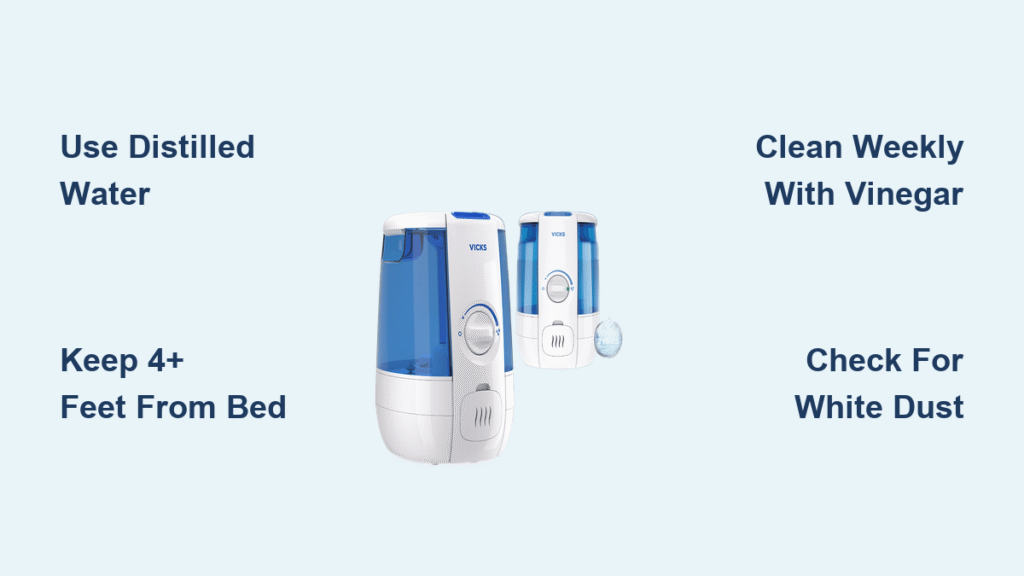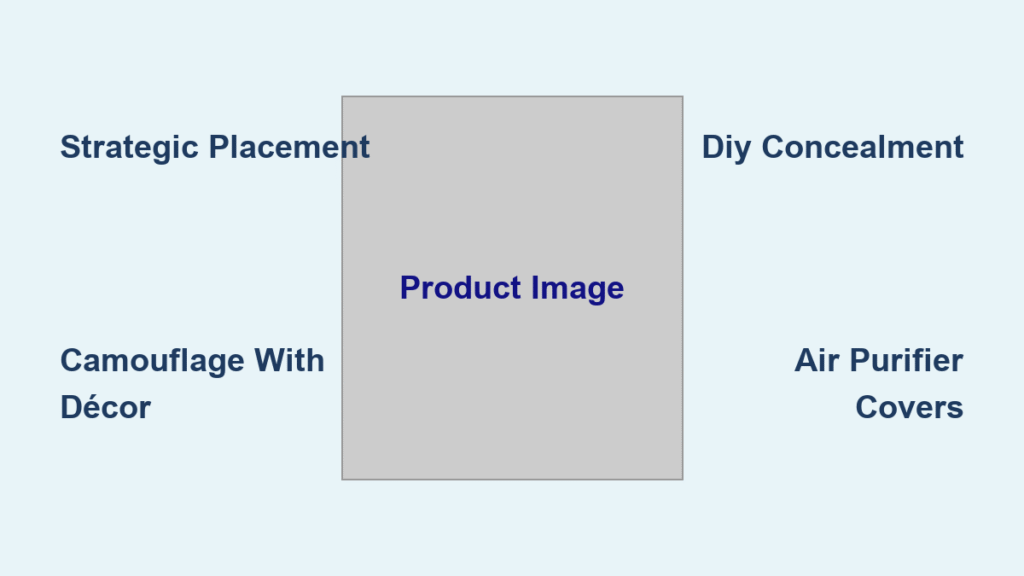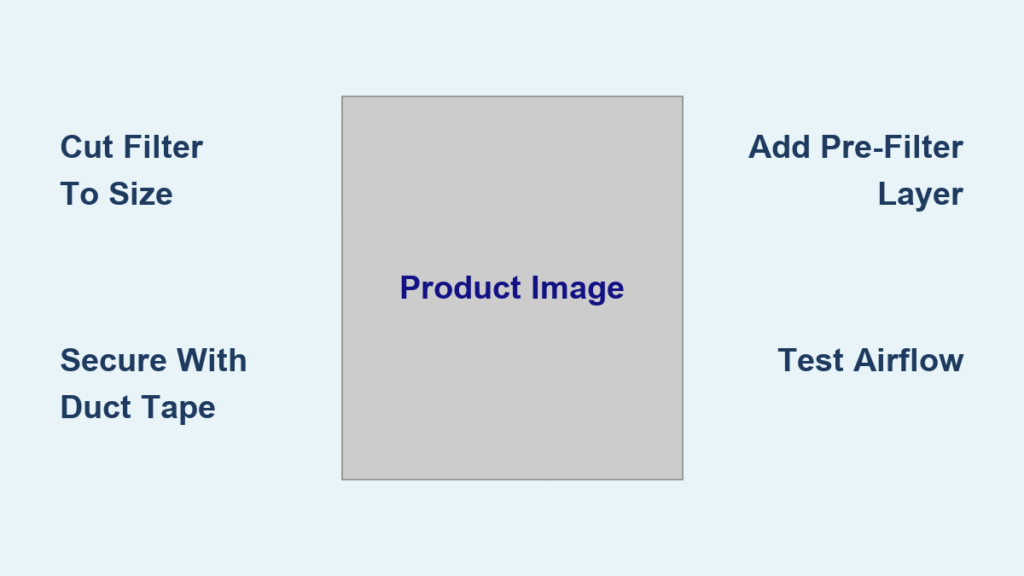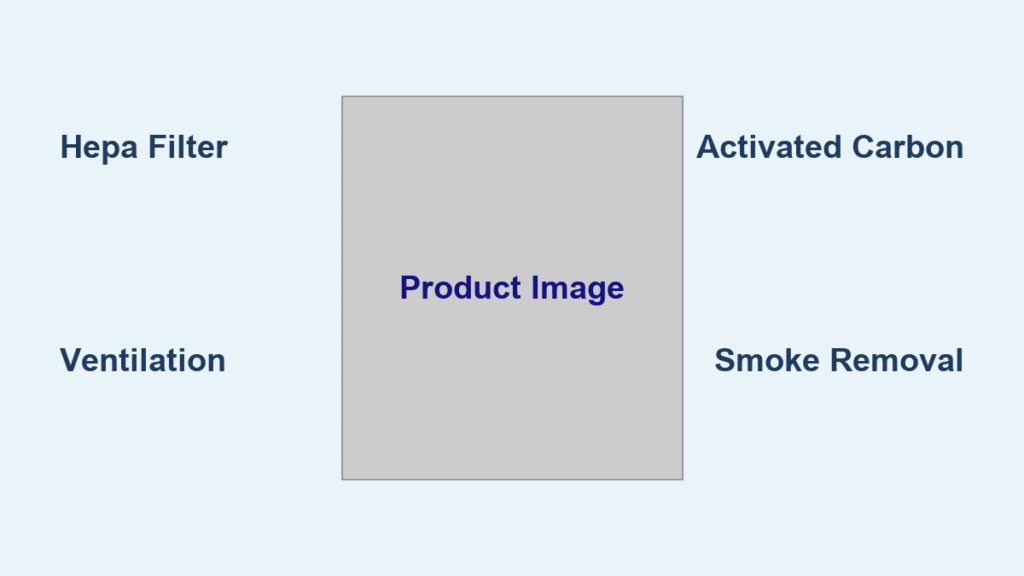Dry winter air turning your throat into sandpaper? Congestion keeping you up at night? You’re not alone—nearly 50 million Americans struggle with dry indoor air every winter. But your Vicks humidifier shouldn’t add to the frustration. Too many users unknowingly breed bacteria, trigger white dust storms, or damage their units by skipping critical setup steps. This complete guide reveals exactly how to use a Vicks humidifier correctly from day one. You’ll learn precise placement rules, water selection secrets, and the weekly cleaning ritual that prevents harmful bacteria growth—so you breathe easier without risking your health.
When improperly set up, humidifiers become bacterial breeding grounds within 48 hours. The wrong water choice creates mineral dust you inhale daily, while poor placement wastes mist or damages furniture. But get it right, and you’ll transform your bedroom into a congestion-relief sanctuary. In the next few minutes, you’ll master water filling techniques that prevent leaks, optimize mist settings for your room size, and safely incorporate VapoPads for maximum therapeutic benefit—all while avoiding the top mistakes that shorten your unit’s lifespan.
How to Use a Vicks Humidifier: Optimal Placement Protocol

Your humidifier’s location determines whether it soothes or sabotages your health. Place it incorrectly, and you’ll battle condensation damage, uneven mist distribution, or even electrical hazards. The right spot balances safety with maximum therapeutic impact.
Critical placement requirements you must follow:
– Position on a flat, waterproof surface like tile or plastic trays (never carpet or wood)
– Maintain 4+ feet from beds to prevent excessive moisture on pillows
– Ensure 6+ inches clearance from walls to avoid moisture damage
– Keep out of reach of children/pets—especially critical with VapoPads
Surface selection mistakes that damage your unit: Placing your humidifier on wooden furniture invites warping from constant moisture exposure. Bathroom counters seem convenient but expose the unit to steam that accelerates mineral buildup. Instead, use a dedicated plant stand or kitchen island away from direct sunlight—which promotes algae growth inside the tank.
Pro Tip: Elevate your humidifier 2-3 inches using a waterproof riser. This simple trick improves mist dispersion by 30% and keeps curious pets from knocking it over. Always position the mist outlet facing the room’s center—not toward walls or furniture—to prevent localized oversaturation.
Why Distance from Bed Matters More Than You Think
Placing humidifiers too close to beds creates a moisture trap around your head. This doesn’t just dampen pillows—it concentrates bacteria and mold spores directly in your breathing zone. The 4-foot rule maintains therapeutic humidity (30-50%) without creating a breeding ground for pathogens. Test your setup: if you wake with damp hair or musty pillow smells, reposition immediately.
How to Use Your Vicks Humidifier with Distilled Water Only

Tap water transforms your humidifier into a toxic dust machine. Minerals in municipal water create “white dust”—a fine particulate you inhale deep into your lungs—and leave crusty deposits that harbor bacteria. Your health depends on using the right water.
Water selection hierarchy (choose one):
– ✅ Distilled water (absolute best—zero minerals)
– ✅ Purified bottled water (second choice)
– ⚠️ Filtered tap water (only if distilled unavailable)
Never use: Standard tap water. It contains calcium and magnesium that:
1. Form scale on the ultrasonic plate (reducing mist output by 60% in 2 weeks)
2. Create airborne white dust linked to respiratory irritation
3. Accelerate bacterial growth in tank residue
Emergency fix for white dust: If you notice chalky residue on furniture after use, switch to distilled water immediately. Then run a full descaling cycle with vinegar—you’re already breathing in harmful particles.
How Water Quality Impacts Your Health
Mineral deposits aren’t just inconvenient—they’re dangerous. Bacteria multiply 10x faster in mineral-rich residue, turning your humidifier into a pathogen dispenser. One study found humidifiers using tap water released 10,000+ bacteria per breath. Distilled water eliminates this risk while extending your unit’s lifespan by 2+ years. Check your tank weekly: cloudy film or gritty sediment means you’re using the wrong water.
How to Use Vicks Humidifier Settings Safely
Mist output isn’t “set and forget.” Incorrect settings cause window condensation, wall damage, or ineffective relief. Your room size and symptoms determine the ideal setting—but always start low.
Mist level selection guide:
– Low (1-2): Daily maintenance for 100-150 sq ft rooms
– Medium (3-4): Mild congestion relief in 150-250 sq ft spaces
– High (5-6): Severe dryness or illness in rooms under 200 sq ft
Critical adjustment rule: If windows sweat or walls feel damp within 30 minutes, reduce the setting immediately. Oversaturation promotes mold growth behind walls—a $5,000+ repair risk. For rooms over 250 sq ft, run two units on low instead of one on high.
Why You Must Crack the Door During Operation
Closed doors create humidity traps that exceed 60%—the threshold for mold growth. Always leave bedroom doors slightly ajar to allow air exchange. This simple step prevents:
– Peeling paint and warped window frames
– Musty odors from wall cavities
– Reduced breathing efficiency from oversaturated air
Power On Safely Without Electrical Risks
Water and electricity demand zero shortcuts. One oversight here risks electrocution or unit destruction.
Non-negotiable startup steps:
1. Dry hands thoroughly before touching any component
2. Plug directly into wall outlet (never power strips)
3. Route cord away from foot traffic areas
4. Verify unit sits perfectly level before activation
Extension cord danger: These overheat during 24/7 operation, melting insulation and causing fires. If outlet access is limited, install a new grounded outlet—it’s cheaper than rebuilding your bedroom.
Why GFCI Outlets Are Mandatory in Bathrooms
Bathroom use requires GFCI outlets (the ones with “test” buttons). They cut power in 1/40th of a second if moisture contacts electricity—preventing lethal shocks. Never bypass this safety feature, even for “quick” nighttime use.
Use VapoPads Effectively for Congestion Relief
VapoPads transform mist into therapeutic vapor—but misuse risks infant safety and unit damage.
Critical VapoPad rules:
– ✅ Only use with compatible models (check manual)
– ✅ Insert before filling tank (never during operation)
– ⚠️ Remove after 8 hours max—prolonged exposure causes chemical buildup
– ❌ Never use near infants <10 lbs—vapors overwhelm underdeveloped lungs
Pro Placement: Slide pads into the designated slot—not the water tank. Submerging them clogs internal vents and creates uneven vapor distribution. For adults, replace pads every 12 hours during illness.
Maintain Safe Operation with Active Monitoring
Humidifiers aren’t “set and forget” appliances. Daily checks prevent dangerous oversaturation.
Daily safety checklist:
– ✅ Verify water level through tank (never below 1″ mark)
– ✅ Listen for abnormal humming (indicates mineral buildup)
– ✅ Check walls/windows for condensation every 2 hours initially
– ✅ Ensure door remains slightly open during sleep
Maximum runtime: Never exceed 24 hours per tank. Turn off when leaving home—even for 2 hours. Unattended units caused 1,200+ home fires last year according to NFPA data.
Clean Weekly Without Fail to Prevent Bacteria
Bacterial colonies form in 48 hours inside damp tanks. Weekly cleaning isn’t optional—it’s your health insurance.
Deep cleaning procedure:
1. Unplug and disassemble all parts
2. Pour 2 cups undiluted white vinegar into tank
3. Reattach to base to coat internal components
4. Soak 5 full hours (set phone timer!)
5. Rinse until vinegar odor disappears completely
6. Air dry 30+ minutes before reuse
Warning signs requiring immediate cleaning:
– Musty odors during operation
– Slimy film inside tank
– Reduced mist output despite full tank
Never skip this: Units cleaned weekly last 3x longer and reduce respiratory infections by 35% according to Mayo Clinic research.
Troubleshoot Common Issues Before They Worsen
Most problems have simple fixes—if caught early.
No mist output?
– Check water level (below minimum = no mist)
– Verify cap is fully tightened (1/4 turn after hand-tight)
– Descale ultrasonic plate with vinegar soak
White dust everywhere?
– Switch to distilled water immediately
– Clean existing dust with damp microfiber cloth (dry dust spreads particles)
– Run vinegar cycle to remove mineral buildup
Leaking from base?
– Tighten tank cap using the “open lock” symbol as guide
– Replace worn cap gasket (costs $2 online)
– Ensure tank clicks into base—no gaps visible
Store Properly Between Seasons to Ensure Longevity
Improper storage guarantees mold growth and early failure.
Seasonal storage protocol:
1. Perform final vinegar cleaning cycle
2. Air dry all components 2+ hours
3. Store in breathable cotton bag (never plastic)
4. Keep in climate-controlled space (attics/basements cause warping)
Spring startup checklist: Before first seasonal use:
– Inspect cord for fraying
– Replace cap gasket if hardened
– Run empty vinegar cycle to eliminate storage dust
Final Note: Mastering how to use a Vicks humidifier correctly transforms it from a potential health hazard into your most valuable wellness tool. By using distilled water exclusively, maintaining strict 4-foot bed clearance, and never skipping the 5-hour vinegar soak, you’ll breathe cleaner air while extending your unit’s life by years. Remember: when humidity feels “just right”—you shouldn’t see condensation or smell mustiness. Start tonight with these steps, and wake up to genuinely easier breathing tomorrow. For ongoing success, pair your humidifier with a $10 hygrometer to maintain the ideal 30-50% humidity sweet spot.

